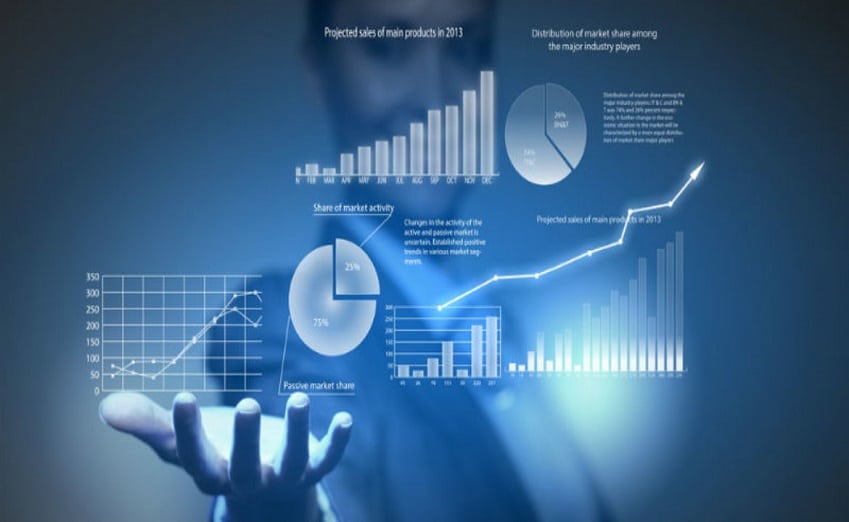
Data Analytics in Marketing
In today’s fast-paced business world, where information is power, data analytics has emerged as a crucial tool in the field of marketing. The ability to collect, analyze, and derive actionable insights from data has become a game-changer for businesses looking to stay competitive. This article explores the realm of data analytics in marketing, from its benefits and key techniques to its challenges and future trends.
Benefits of Data Analytics in Marketing
Improving Decision-Making
Data analytics empowers marketers with valuable insights to make informed decisions. By analyzing consumer behavior, market trends, and competitor data, businesses can develop strategies that are more likely to succeed.
Enhancing Customer Insights
Understanding your customers is essential for effective marketing. Data analytics allows businesses to create detailed customer profiles, which can be used for personalized marketing, leading to higher customer satisfaction and loyalty.
Tailoring Marketing Strategies
Data analytics enables marketers to segment their audience based on various factors like demographics, behavior, and preferences. This segmentation helps in tailoring marketing strategies to different customer groups.
Increasing ROI
By identifying which marketing efforts are most effective, businesses can allocate resources more efficiently. This leads to an improved return on investment (ROI) for marketing campaigns.
Staying Competitive in the Market
In today’s market, staying ahead of the competition is vital. Data analytics helps businesses identify market trends and adapt their strategies accordingly, ensuring they remain competitive.
Key Data Analytics Techniques in Marketing
Customer Segmentation
Dividing your customer base into segments with similar characteristics helps in targeting the right audience with relevant content and offers.
Predictive Analytics
This technique uses historical data to predict future outcomes. Marketers can use predictive analytics to forecast sales, customer churn, and other critical metrics.
A/B Testing
A/B testing involves comparing two versions of a marketing element (such as an email subject line or a webpage) to determine which performs better, providing insights for optimization.
Marketing Automation
Marketing automation tools use data to send personalized messages at the right time, increasing the chances of conversions.
Social Media Analytics
Analyzing social media data helps marketers understand customer sentiment, engagement, and the effectiveness of social media campaigns.
Data Collection and Analysis
Collecting data is the first step in data analytics. It involves gathering information from various sources, including websites, social media, customer surveys, and more. Once collected, the data is analyzed using tools like Google Analytics, Adobe Analytics, or custom-built systems. The results are then interpreted to extract meaningful insights.
Data-Driven Marketing Strategies
Content Personalization
Personalized content, driven by data, speaks directly to the individual preferences of customers, making marketing more effective.
Targeted Advertising
Data analytics allows for highly targeted ad campaigns, ensuring that the right audience sees your message.
Email Marketing Optimization
Analyzing email open rates, click-through rates, and conversion rates helps improve the effectiveness of email marketing.
Customer Journey Mapping
Understanding the customer’s path to purchase through data helps optimize the sales funnel and improve conversion rates.
Challenges in Data Analytics
Data Privacy Concerns
With the increasing importance of data, there are concerns about privacy and security. Marketers must navigate these challenges while respecting customer data.
Skill Gap in the Workforce
To fully harness the power of data analytics, businesses need employees with the right skill set. Bridging the skill gap is crucial.
Integrating Data from Various Sources
Companies often gather data from multiple sources, and integrating and making sense of this data can be a complex task.
Case Studies
Company A: Enhanced Personalization
By using data analytics, Company A increased customer engagement by 30% through personalized product recommendations in their e-commerce store.
Company B: Targeted Advertising Success
Company B achieved a 40% increase in sales after implementing data-driven targeted advertising campaigns on social media.
Future Trends
Artificial Intelligence and Machine Learning
AI and machine learning are set to play a more prominent role in data analytics, providing more accurate predictions and automation of tasks.
Predictive Analytics Advancements
Predictive analytics will become even more sophisticated, enabling businesses to anticipate customer behavior with greater precision.
Enhanced Data Security
As data becomes more valuable, there will be a focus on enhancing data security measures to protect customer information.
Conclusion
Data analytics is a driving force behind successful marketing in the digital age. It offers valuable insights, enhances decision-making, and allows businesses to stay competitive. As data analytics techniques and tools continue to evolve, companies that embrace this approach will have a significant advantage in the market.

